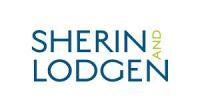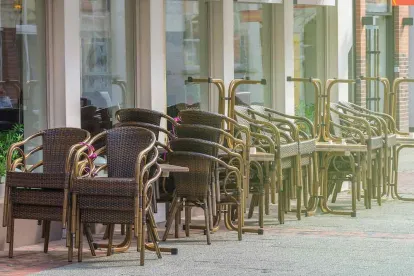The Small Business Administration (“SBA”) registration for the Restaurant Revitalization Fund Program (the “RRF”) opened on Friday, April 30, 2021, and began accepting applications at noon on Monday, May 3, 2021. Eligible businesses should familiarize themselves with the SBA’s Program Guide and sample application form and should register for an account with the SBA and compile their information to prepare to apply. Below are certain key elements of the RRF application.
Eligible Businesses
Despite its name, the RRF is not only for restaurants. Eligible businesses include restaurants, food stands, food trucks, food carts, caterers, saloons, inns, taverns, bars, lounges, brewpubs, tasting rooms, taprooms, and other businesses where the public gathers for the primary purpose of food/drink service.
Eligibility Details:
-
A business operating with its own tax identification number and located inside another business (like a restaurant or bar operating independently inside a hotel) is eligible
-
Inns, bakeries, brewpubs, wineries, tasting rooms, and the like must demonstrate that on-site food and beverage sales to the public constituted at least 33% of their gross receipts in 2019 to be eligible. If such businesses opened in 2020 or have not yet opened, the original business model must have contemplated at least 33% of gross receipts consisting of on-site sales to the public.
-
Businesses operated by state or local governments are ineligible for the RRF, as are businesses that have permanently closed or filed Chapter 7 bankruptcy.
-
Businesses that have filed Chapter 11, 12, or 13 bankruptcies are eligible only if they are operating under approved reorganization plans.
-
Publicly traded companies and non-profit organizations are ineligible for the RRF.
-
Businesses that have pending or successful applications for a Shuttered Venues Operators Grant are ineligible for the RRF, but businesses that did not apply for or were denied such grants remain eligible for the RRF.
Previous applications or receipt of funds received under the Paycheck Protection Program (“PPP”) or Economic Injury Disaster Loan program (“EIDL”) will not affect eligibility. However, applicants with outstanding PPP applications are required to withdraw their PPP applications upon application to the RRF – this is required whether or not the RRF application is ultimately successful.
For more information on eligibility, see page four of the program guide.
Affiliation Rules
An entity is eligible for the RRF if, together with any affiliates (i.e., any one businesses in which the applicant directly or indirectly holds at least a 50% ownership interest, or of which the applicant has authority to control its direction), it owns or operates 20 or fewer locations, regardless of whether the individual businesses operate under the same name or are different types of businesses. This is the case even if the individual businesses or locations operate under different tax identification numbers, operate in different industries, or have different names, or if they had been eligible for and received separate PPP funding under the CARES Act. For example, an entity that owns 10 restaurants and 5 restaurants/lounge clubs owns a total of 15 locations and would be eligible, but an entity that owns 8 restaurants and 14 hair salons still owns a total of 22 locations, so none of its 8 restaurants is eligible for the RRF.
If a holding company’s sole purpose is to hold real estate for the eligible applicant businesses, the holding company would not be considered a “location” or as an affiliate for purposes of the 20 location cap. However, if an applicant business owns a holding company or management company that in turn owns or manages businesses other than the applicant business, these are all considered separate affiliates and separate locations with respect to the cap.
Application Funding Amount
The RRF is intended to provide a grant equal to an applicant’s pandemic-related revenue loss. Applicants are required to apply for a minimum of $1,000 per location and a maximum of $5 million per location (not to exceed $10 million total for all affiliated businesses). Funding allocated is dependent on the scenarios below:
-
If an applicant was operating prior to or on January 1, 2019, the funding amount is calculated by subtracting the applicant’s 2020 gross receipts from the gross receipts reported on the applicant’s 2019 federal tax return and the original disbursement amount of any PPP or EIDL program payment, or any other small business grants received (whether received in 2020 or 2021 but not any amount repaid before May 18, 2020).
-
If an applicant began operations during 2019, the funding amount calculation is pro-rated by calculating the 2019 average monthly gross receipts (total 2019 gross receipts divided by the number of 2019 operating months and multiplied by 12). The applicant’s 2020 gross receipts and any government assistance are then subtracted as above.
-
If an applicant began operations between January 1, 2020 and March 10, 2021 or has not yet begun operating, the funding amount is determined by taking the amount spent on Eligible Expenses (see below) between February 15, 2020 and March 11, 2021 and subtracting gross receipts for 2020 and for January 1, 2021 through March 11, 2021 and the original disbursement amount of any PPP or EIDL program payment, or any other small business grants received (whether received in 2020 or 2021 but not any amount repaid before May 18, 2020). Businesses that have not begun operating nor incurred Eligible Expenses prior to March 10 are ineligible for the RRF.
The RRF considers “operating” to be making actual sales to the public. Therefore, if a company formed in December of 2019 made its first sale to the public in February 2020, the RRF would consider it to have begun operations in 2020.
In each scenario, if the total difference is more than $5 million per location, the funding amount for that location will still be capped at $5 million.
Deadline to Use Funds and Eligible Uses of Funds
The SBA estimates that RRF grants will be disbursed within 14 days after the applicant submits a complete application and all required documentation.
All RRF funds received must be used before the earlier of March 11, 2023, or the permanent closure of the business (the “Covered Period”). If a recipient is unable to use all of the funds before the end of its Covered Period, all unused funds must be returned to the government. At the end of each calendar year, recipients must report how much of the funds have been used and in what Eligible Expense categories.
“Eligible Expenses” under the RRF include payroll costs (including group health care contributions); principal or interest on mortgage obligations and other debt service (but not prepayment of principal); current and past-due rent (but not prepayment); utilities; maintenance expenses; including FF&E purchases; construction of outdoor seating; protective equipment and cleaning materials; food and beverage inventory; certain supplier costs; and business operating expenses, including rent, equipment, insurance, licenses, and fees. Past-due expenses incurred between February 15, 2020 and March 11, 2023 are Eligible Expenses.
Thus, funds obtained from the RRF have far more allowed uses than funds obtained through the PPP. Grants made under the RRF are not taxable income. The SBA has not yet released guidance on what penalties (if any) will be assessed for using RRF grants for ineligible expenses.
Funding Priority
Although the SBA will accept all applications beginning on May 3, 2021, during the first 21 days of the program, it will distribute funds only to applicants that are 51% owned by women, veterans, and/or socially and economically disadvantaged individuals (each, a “Priority Group”). Beginning on day 22, the SBA will distribute funds in the order in which applications are approved by the SBA. Applicants that are not members of a Priority Group are still encouraged to apply beginning May 3.
$5 billion of the RRF has been set aside for applicants with 2019 gross receipts of $500,000 or less.; $4 billion for 2019 gross receipts of $500,001 through $1,500,000; and an additional $500 million for applicants with 2019 gross receipts of $50,000 or less.
For more information on priority group definitions, see page 15 of the funding guide.
Summary
The Restaurant Revitalization Fund provides yet another government-sponsored source of rescue capital for a broad host of food and beverage industry owners and operators. Because the sizing of grants is tied to the reduction in gross sales from 2019 to 2020, applicants who have been hit the hardest in 2020 could receive the most assistance. And, because the Eligible Expenses for RRF grants are much less restrictive than the PPP and the Covered Period is longer than the PPP or EIDL programs, the RRF allows businesses to plan for the future in ways that make the most business sense, not just dictated by program rules.




 />i
/>i

